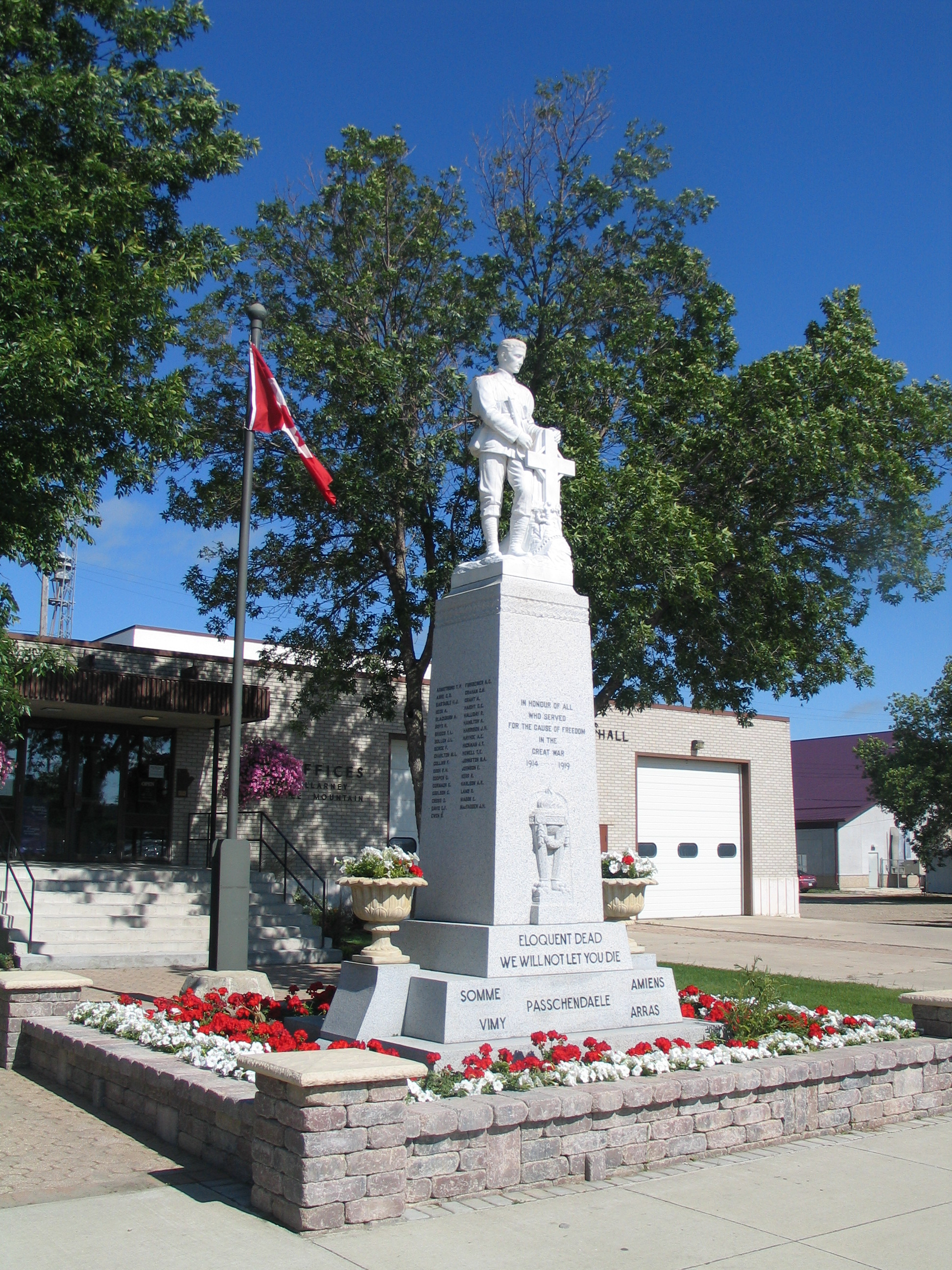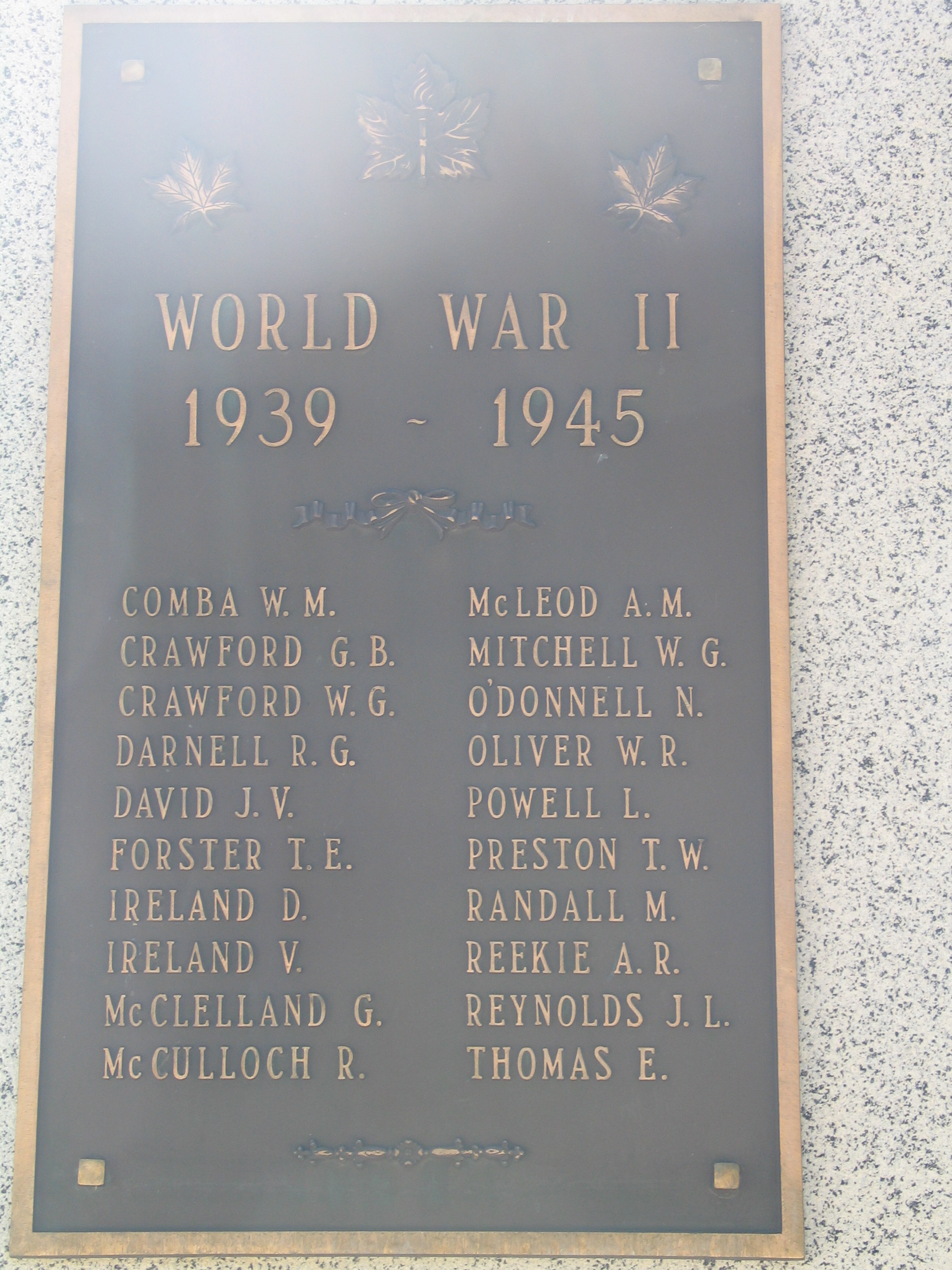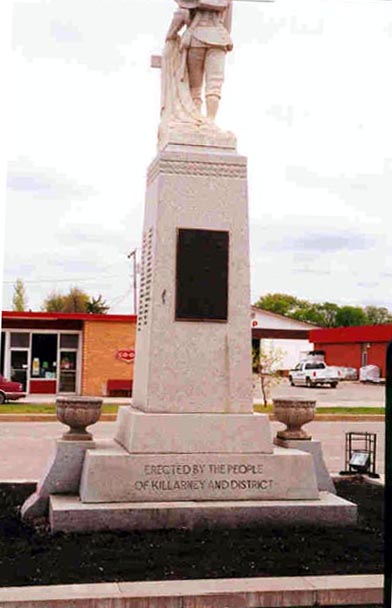At the Armistice Day service in 1923, Rev S. J. Wickens, Anglican Rector and former army chaplain, deplored the lack of a memorial to the war dead. By June 1924, the local Great War Veterans Association had established its own fund.
Rev Wickens announced at the annual Memorial Service in July 1925 the formation of a new committee headed by A. L. Mason, chairman; J. G. Kellet, secretary; H. L. Rogers, treasurer; and members T. Fairhall, B. Mason, W. J. Schnarr, W. A. Shaver, R. Squires and R. Clark. A sketch of the proposed monument appeared on the service leaflets. The district had been mapped out for canvassing with an objective of $3,000. Funds previously collected had been turned over to the committee in the amount of $1,290.
The site chosen was in front of the Town Hall and the canvas was completed by mid-December. Late in May 1926, a contract was signed with Hooper Marble and Granite of Winnipeg to supply the cenotaph at a cost of $3,350. Emanuel Hahn's grieving soldier was carved of marble in Italy. The foundation was laid and the materials arrived in early September and a dedication ceremony took place on Sunday September 25, 1926. The guest speaker was the Rev Col G. A. Wells together with Major F. G. Taylor, (later Colonel), chairman of the Canadian Pension Commission. The honour of the actual unveiling fell to the padre of the newly chartered branch of the Canadian Legion.
Emanuel Hahn's design represents the sorrows caused by war. The soldier atop the cenotaph looks down in sadness at the ground below him, as if he might find there, his fallen comrades, if not for the tragedy of war.
The statue depicts a young, grieving Canadian soldier in First World War army uniform. With uncovered head, he is standing at a battlefield grave – a simple cross with poppies and a broken chain at the base and the flag draped behind it – the final resting place of a comrade killed in action. His left hand rests on the cross, while his right hand holds a reversed rifle. His helmet is slung over his shoulder.
After 1945, a plaque was added to honour those that died in the Second World War.
Emanuel Hahn moved to Toronto at the age of seven with his family of artists and musicians from Germany, in 1888. He studied commercial design and model-making at Toronto Technical School and Ontario College of Art and Industrial Design. At 25 years old Hahn began a nearly lifelong contract with Thomson Monument Company of Toronto. Two years later, he also started work as a studio assistant to sculptor Walter Seymour Allward. Part of his duties included assisting on Allward’s significant works such as the South African War Memorial in Toronto.
In 1912 Hahn began an association with the Thomson Monument Company of Toronto. It was there, along with several assistants, he made the many war memorials that are found across Canada: Fernie, British Columbia; Killarney and Russell, Manitoba; Alvinston, Bolton, Cornwall, Hanover, Lindsay, Malvern, Milton, Petrolia and Port Dalhousie, Ontario; Gaspe, Quebec; Moncton, New Brunswick; Springhill and Westville Nova Scotia; Summerside, Prince Edward Island.
Hahn is probably most famous as the designer of the Bluenose on the back of the Canadian dime and the Caribou on the back of the Canadian quarter. He was a victim of anti-German sentiment in the years following the Great War, when his design for the Winnipeg Cenotaph was rejected in 1925.


